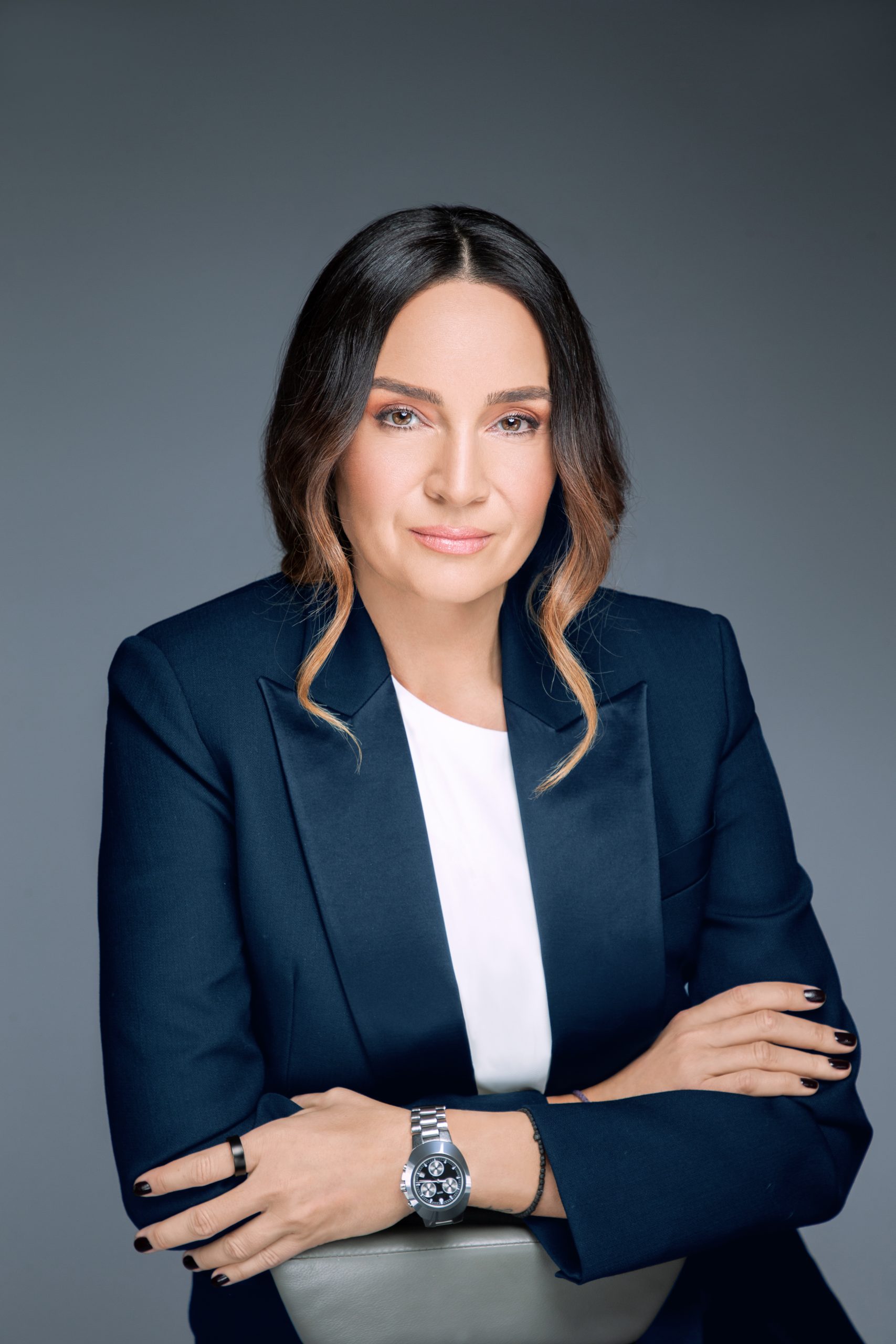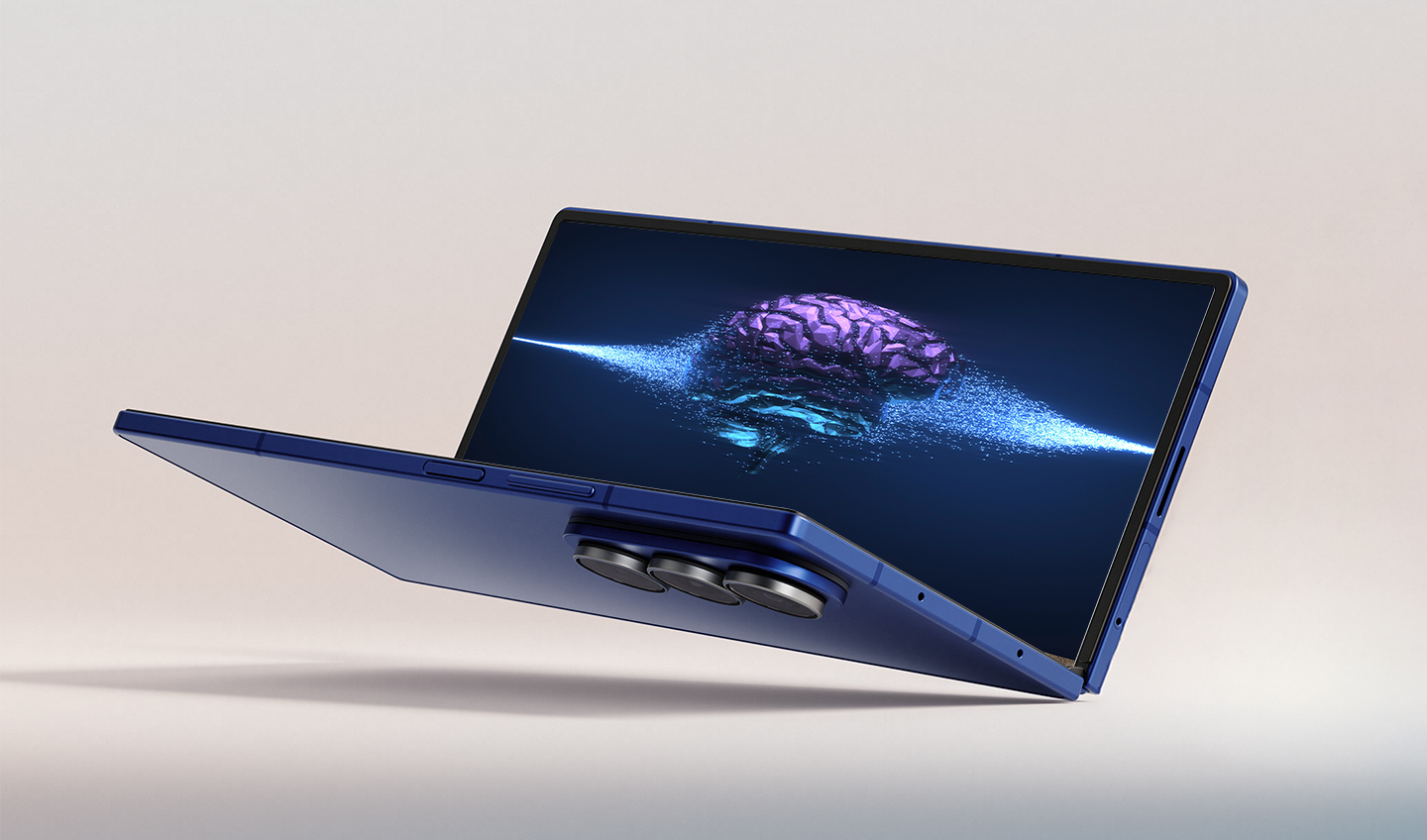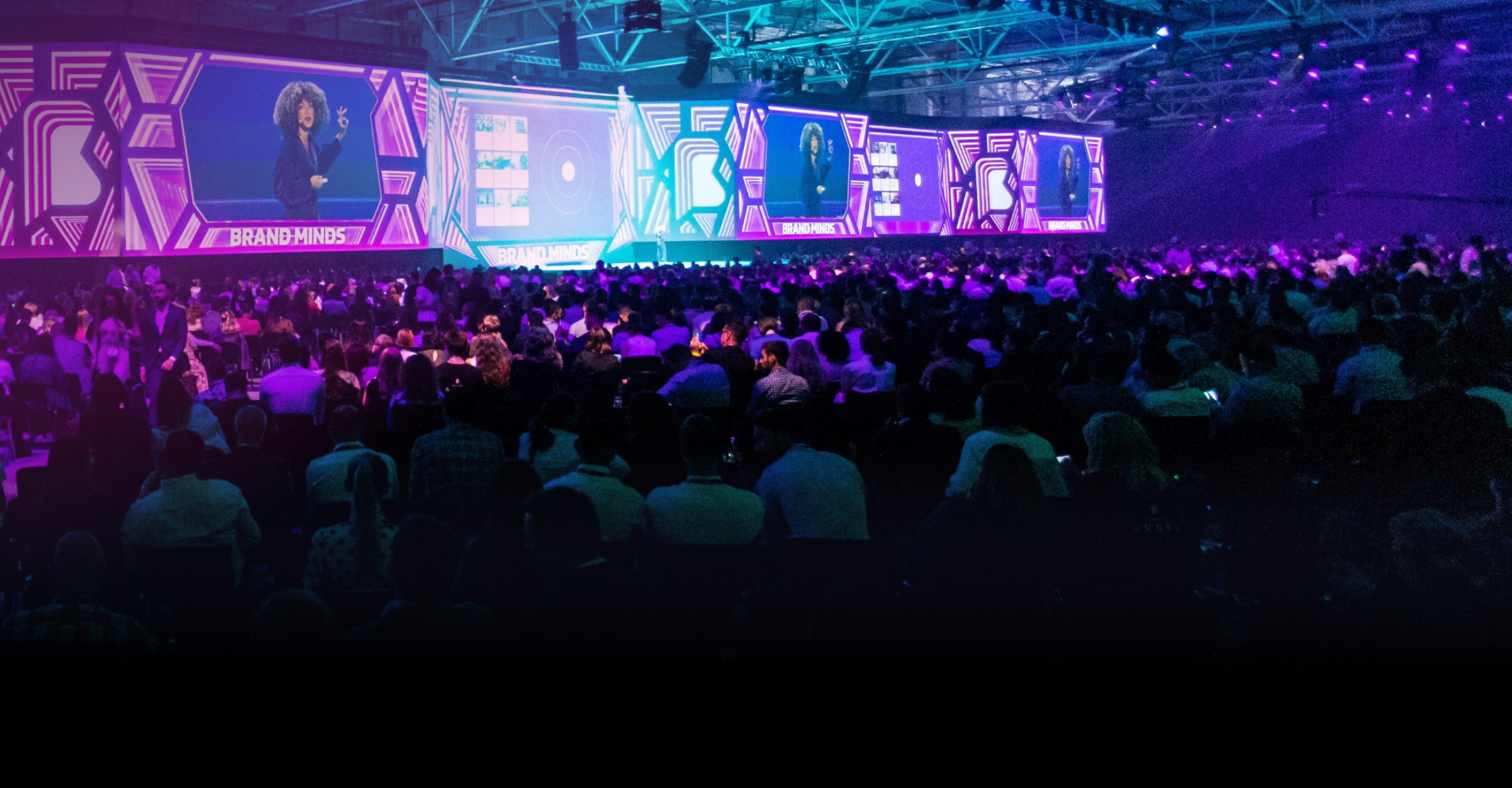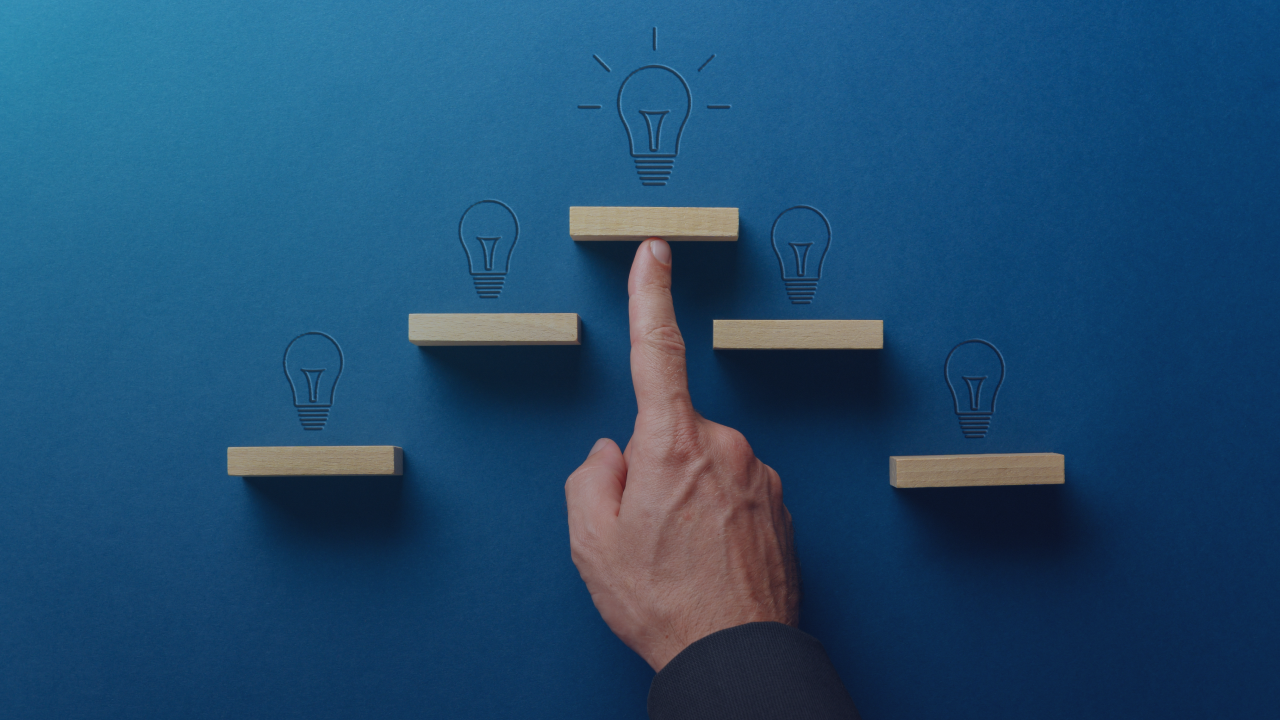Green PR Global is the first communications agency in Romania dedicated exclusively to sustainability, built on the belief that nature needs a strong and authentic voice.
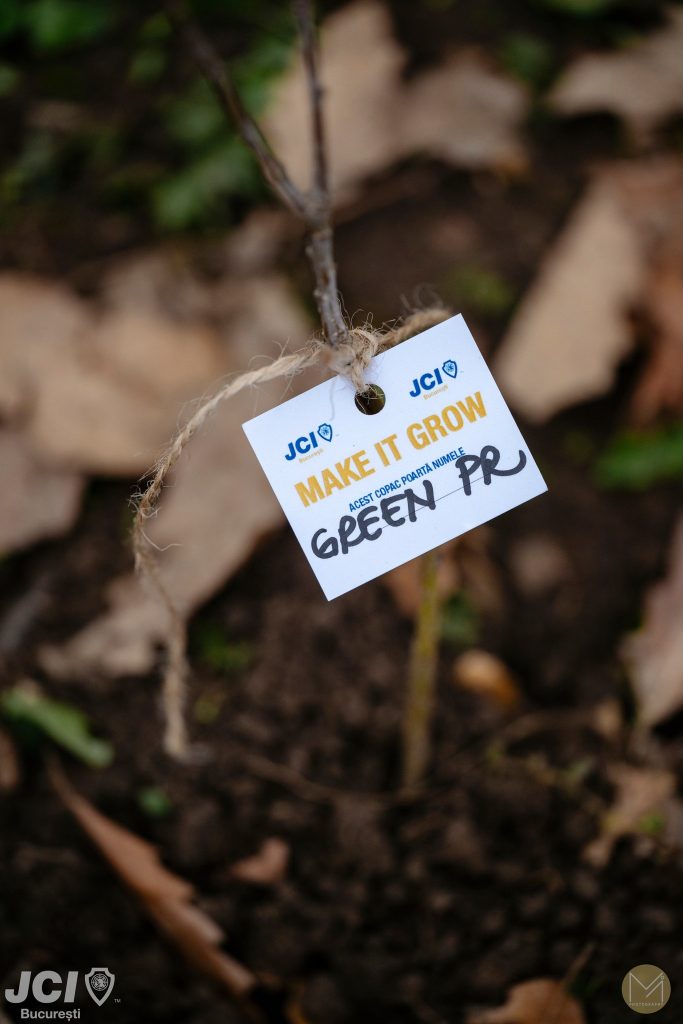
With solid experience in strategic communication and a team passionate about green innovation, Green PR Global brings together corporations, NGOs, entrepreneurs, and communities in a dialogue oriented toward action.
For Green PR Global sustainability is not just a trend but a central mission: to place Romania on the international map of green initiatives and to demonstrate that, through communication and action, we can build a cleaner, more balanced, and more responsible future.
Green PR Global joined the Make it Grow project some time ago at the invitation of JCI — a gesture that reaffirms the shared commitment to a greener future.
Tree planting is one of the simplest and most effective ways we can combat climate change and help restore natural balance within communities.
The invitation to take part in Make it Grow gives Green PR Global the opportunity to turn their vision into real contribution: every tree planted is a symbol of responsibility and an investment in the health of future generations.
We welcomed Mădălina Sandu Founder of Green PR Global for an interview on sustainability, reforestation projects and technologies, the role of AI and how education and communication are paramount in building systemic sustainability.

1. How can initiatives like Make It Grow, with over 31,000 trees already planted, become a national blueprint for sustainability at scale?
Make It Grow began from an emotion: the desire to leave something good behind. If we manage to keep this emotion alive and multiply it in every community across the country, then yes, it can become a national model.
Sustainability begins with a seed and grows only when people truly believe in it. We, at Green PR Global, consistently support this project by JCI Bucharest and aim to reach the goal of planting 55,555 trees for Romania.
So far, approximately 31,000 trees have been planted in Comana Natural Park. The 15th edition took place on November 22nd, where we planted 3,000 trees
We repeat these actions because humans are not separate from nature, we are an extension of it. And when we plant a tree, we are also making an inner gesture: reconnecting with the natural rhythm of the world we belong to.
Make It Grow can become a national blueprint only in one way: when we understand that by planting nature into the world, we are planting nature within ourselves.
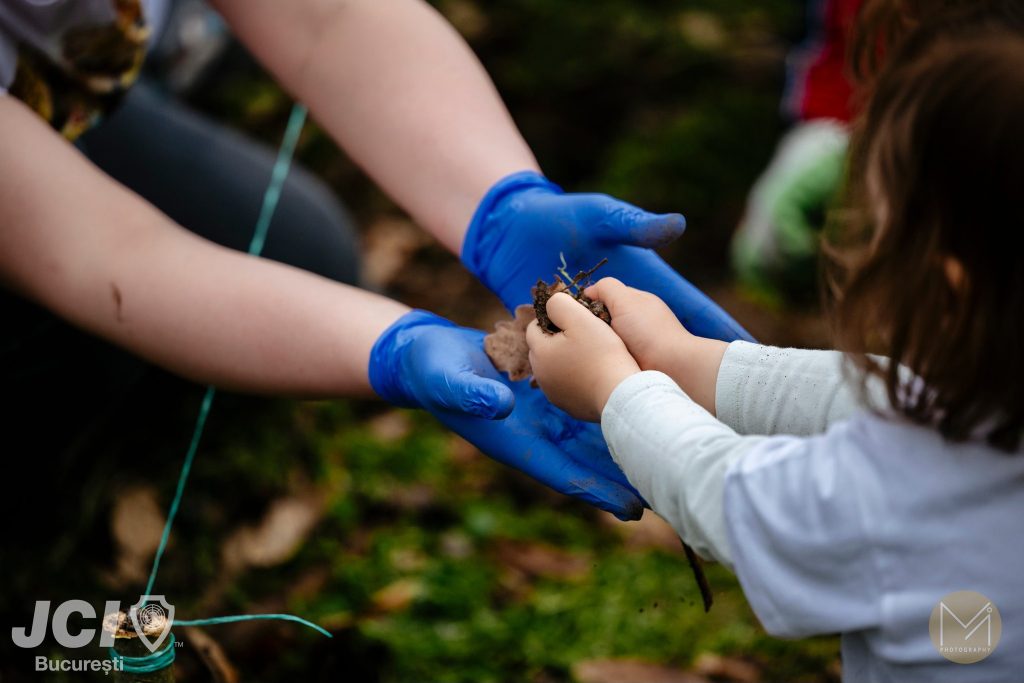
2. What key factors are missing today in Romania’s sustainability ecosystem to transform isolated green projects into a collective national movement?
Our country is full of opportunities. What we still need is the courage to collaborate without ego, the patience to build without rushing, and the wisdom to understand that sustainability is not a project it is a state of consciousness. In Romania, many green initiatives are beautiful islands, yet still isolated. To become a national movement, we need a shared culture, a culture in which communities, companies, and leaders see themselves as parts of the same living organism.
We are still missing that moment of clarity when we realize that nature is not outside of us but a continuation of us. I look at this optimistically and with patience, because once this understanding settles in, unity emerges, and sustainability becomes, beyond an objective, our natural way of existing together.
3. How can reforestation projects evolve from environmental actions into social impact programs that educate, unite, and empower communities?
When you see children planting trees alongside parents and grandparents, you instantly understand that reforestation is not just an environmental action it is a form of reconnection. Nature becomes once again the space where generations meet, learn, and rediscover one another. I lived this feeling during the years I spent at my grandparents’ home, where life in the middle of nature taught me the meaning of simplicity, authenticity, and the kind of calm that nourishes the soul. There, I understood that nature doesn’t teach us only to protect the world, it teaches us to protect ourselves.
Reforestation can grow into a social impact program precisely because of this energy: through experiences that unite families, build communities, and teach people to live with a purpose larger than themselves. Many of us want meaningful lives, and contributing to a forest that will grow for future generations is one of the most powerful legacies we can leave behind.
Thus, tree planting becomes more than an ecological act, it becomes a community ritual, a form of emotional and civic education, a way to rediscover one another and to build, together, a future rooted in goodness.
4. What would it take for sustainability to become a shared responsibility, between companies, institutions, and citizens, rather than a niche cause?
Sustainability becomes a shared responsibility when we shift from the mindset of “someone should do something” to “each of us plays a role in this balance”. Companies must see impact as a natural part of their business, institutions as a duty toward society, and citizens as an extension of the way they live.
But this requires something deeper: a shift in consciousness, not just policies or projects. Sustainability stops being niche when it becomes part of our identity when we understand that what we do to the world, we ultimately do to ourselves. Once this understanding becomes collective, responsibility is no longer delegated. It is shared. It becomes normality.
5. How can we ensure that sustainability becomes part of corporate DNA, not just part of annual CSR reports?
Sustainability becomes part of a company’s DNA when it shifts from being a “report” to a reflection of identity. Not a box ticked once a year, but a principle shaping decisions, products, relationships, and organizational culture. This requires three things: vision, consistency, and courage.
Vision: leaders must understand that sustainability is not a cost but a future.
Consistency: promises must be followed by visible, daily actions.
Courage: to move forward even when change requires effort, time, and letting go of old habits.
When sustainability becomes a criterion in every decision, from procurement to internal culture, it enters the company’s “genetic code.” And it shows not on paper but in behavior, in the way people work, in the way the company grows, and in how it contributes to the world.
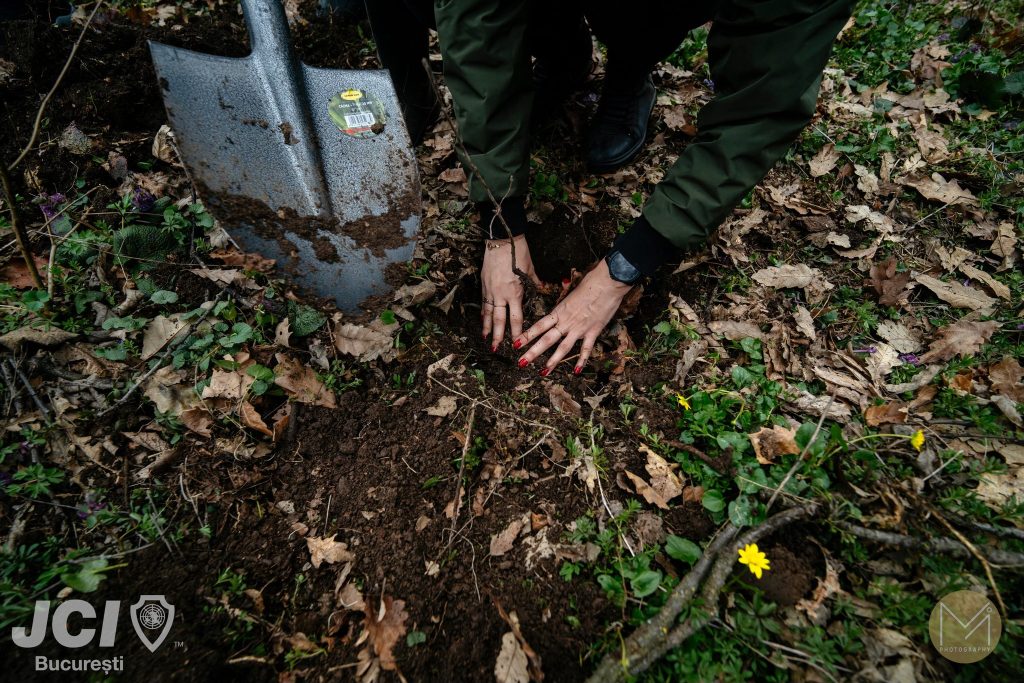
6. What innovations or partnerships are needed to track the real impact of reforestation: not just in numbers, but in biodiversity and community wellbeing?
To truly measure the impact of reforestation, we need more than numbers, we need tools that can see life. This means innovations and partnerships capable of tracking not only how many trees were planted but how the ecosystem revives and how the community transforms.
Satellite monitoring, drones, soil sensors, and digital platforms can track biodiversity in real time. NGOs, academic institutions, and tech companies can become natural partners. And local communities can become co-authors of change through educational programs, volunteering, and participatory nature observation. Ultimately, real impact is not measured only in trees but in the life that returns with them, the birds, insects, cleaner air, more engaged people. When we measure these elements, we are not just tracking a project’s progress, we are measuring the heartbeat of a world in recovery.
7. How can technology, data, and AI accelerate Romania’s transition toward large-scale environmental restoration?
Technology, data, and AI can accelerate Romania’s path toward large-scale restoration when we stop seeing them as technical tools and start viewing them as mechanisms of clarity and truth. With satellite imagery, drones, and AI models, we can map degraded lands, monitor forest health in real time, and prioritize areas where nature has the highest potential to regenerate.
Digital platforms can unite companies, NGOs, institutions, and volunteers into a single architecture of transparency, where data on plantings, biodiversity, and carbon capture is measurable, verified, and accessible to all. AI can recommend native species for each micro-region, optimize planting plans, and measure impact not just in numbers but in community wellbeing.
As I study this field intensely, I see more clearly that the true power of technology lies not in algorithms but in its ability to force us to see the world as it is without illusions or cosmetic narratives. Used responsibly, technology can transform environmental restoration from sporadic campaigns into a continuous, intelligent, and collaborative process.
In the end, AI doesn’t save nature, people do, by using it to make better decisions, faster, and most importantly, together.
8. What role do education and communication play in turning ecological awareness into consistent behavioral change across generations?
Education and communication are the bridges that transform ecological awareness into consistent, generational behavior. Education offers understanding, the why that connects humans to nature. Communication brings emotion, the I want to that makes change personal.
Introducing sustainability into universities has shown me how powerful this combination is: young people do not need only information, they need meaning, context, and role models. When you teach students to see the environment as part of their identity, not an abstract topic, real transformation begins.
When education plants seeds and communication waters them, a cycle emerges: parents learn from children, children learn from teachers, and generations influence one another. Change becomes durable when people don’t only know what to do, they feel it is part of who they are.
9. How can Romania position itself as a regional leader in climate action and sustainable land use aligned with SDG 13 and SDG 15?
Romania can become a regional leader in climate action and sustainable land use when it transforms its natural strengths into models of innovation. With vast forests, rare biodiversity, and vibrant rural communities, the country can showcase how SDG 13 and SDG 15 are applied through pilot programs in reforestation, land restoration, and regenerative agriculture.
Leadership emerges when the state, companies, universities, and communities work together on the basis of transparency and clear impact indicators. Romania doesn’t need to catch up, it needs to dare to show that it innovates through nature. That is how you become a reference point, not a follower.
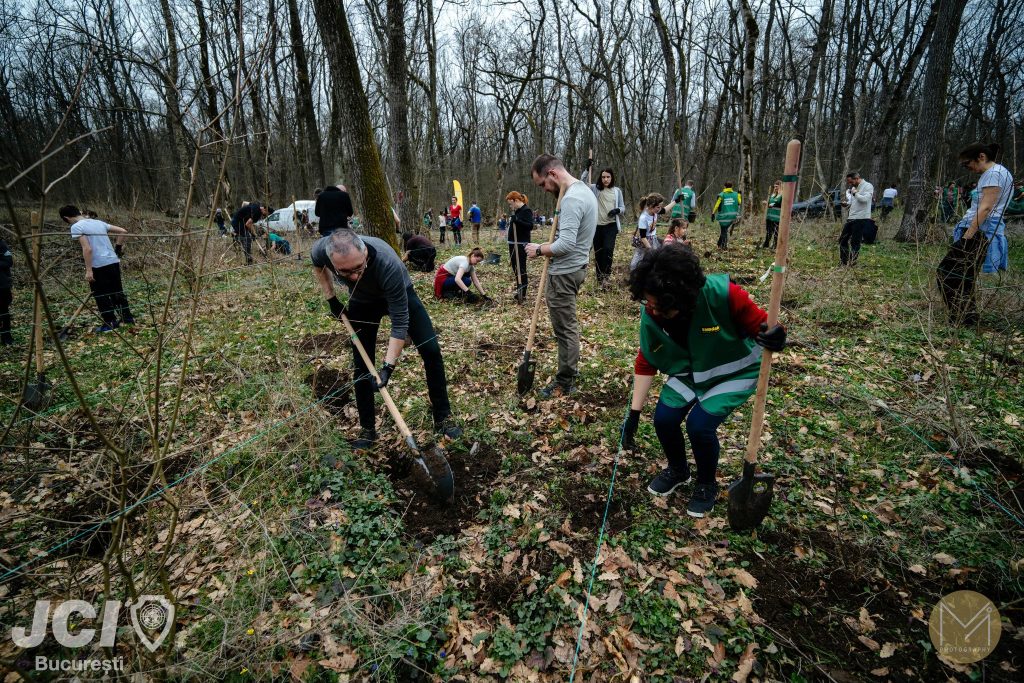
10. What does true systemic sustainability look like, and how can we build an ecosystem where environmental progress drives economic and social resilience?
True systemic sustainability emerges when the environment, economy, and society are no longer treated as separate domains but as parts of the same organism. In such a system, protecting nature does not slow development, it enables it. Healthy soils mean stable agriculture; protected forests mean safe communities; clean energy means a competitive economy.
To build this ecosystem, we need coherent policies, companies that integrate sustainability into business decisions, educated and engaged communities, and authentic collaboration between the public sector, private sector, and academia. When environmental progress becomes the engine of economic prosperity and social cohesion, we no longer speak about green projects, we speak about a national model.
At that moment, sustainability stops being an ideal and becomes the infrastructure of the future.




